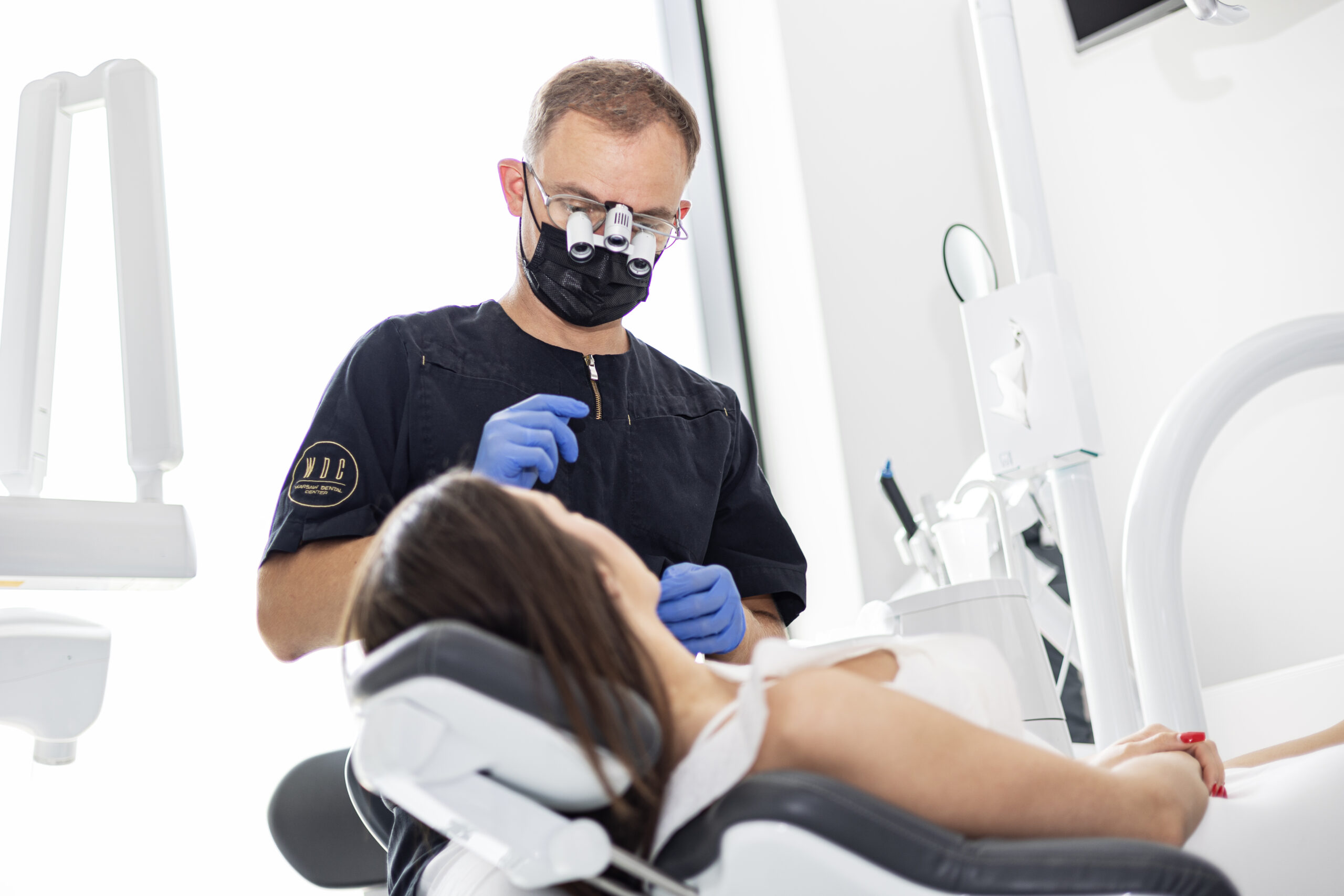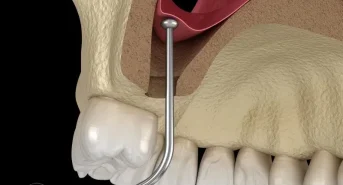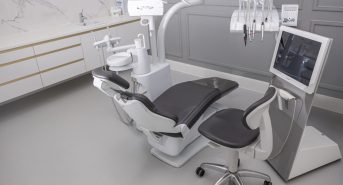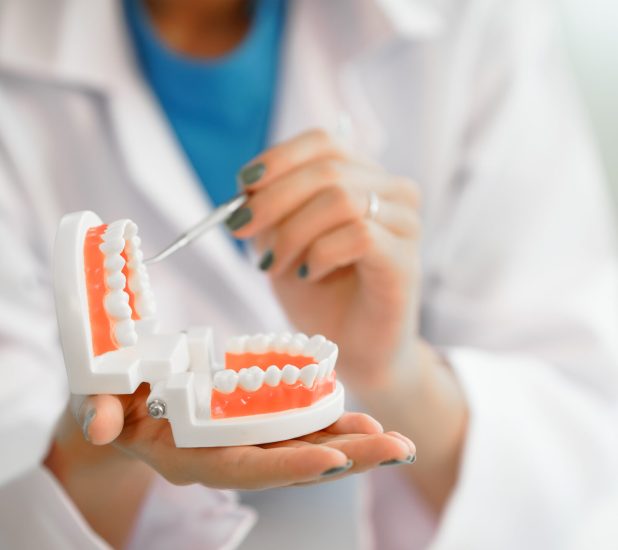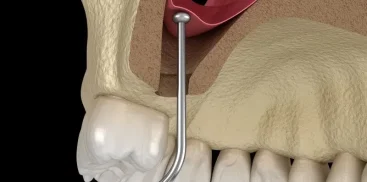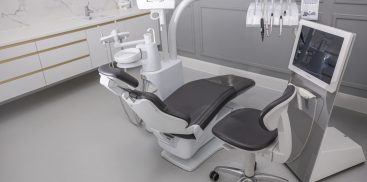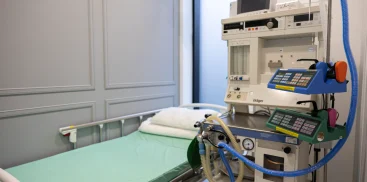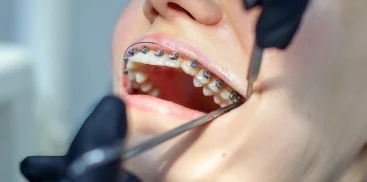Bartosz Leończak uses magnifying glasses for his treatments, which make his work more precise and more predictable.
It often happens that patients come to the dentist with pain in one tooth, and it turns out that the problem is more complex than just a single tooth.
That is why a comprehensive approach to dental diagnosis and treatment is so important.
In this article, we will discuss why it is worth focusing on examining the entire mouth, not just one tooth, and how this affects treatment planning.
When a patient presents with a toothache, the dentist must first find out what the exact problem is.
Therefore, an intraoral examination is performed, which includes a detailed examination of the oral cavity.
During this examination, the doctor may identify other problems that are not necessarily related to the pain reported by the patient.
It is common for patients to have other dental problems, such as caries, gingivitis or malocclusion, that require attention and treatment.
Additionally, the dentist may recommend X-rays, which provide more detailed information about the condition of the teeth, roots and periapical tissue.
Based on these tests, problems that are not visible to the naked eye can be detected.
In some cases, if more serious problems are suspected, the dentist may decide to perform a 3D scan, which provides even more detailed images of dental structures.
However, it is worth remembering that individual tests may vary in duration and cost.
Not all tests are always necessary, but their implementation depends on the individual patient’s situation and the suspected problem.
Ultimately, based on the information collected, the dentist develops one or more treatment plans.
It is in this phase that the patient has the opportunity to make a decision regarding further treatment.
The dentist discusses available treatment options with the patient, explaining the benefits and potential risks of each
hey of them.
It is important for the patient to be aware of the various options and understand that sometimes the treatment of one tooth may also require attention and treatment of other teeth or dental problems.
However, please remember that the treatment plan may undergo some changes during the course of the procedure.
Dentistry is a field that cannot predict all unexpected circumstances.
During treatment, new problems may arise or it may be necessary to adjust the therapeutic strategy.
That is why cooperation and open communication between the patient and the dentist are so important in order to adapt the treatment plan if necessary.
A comprehensive approach to dental diagnosis and treatment is extremely important.
Patients often present with pain in one tooth, but may have other dental problems that also require attention.
Examination of the entire oral cavity and the use of various diagnostic techniques allow for a thorough assessment of oral health and appropriate treatment planning.
When it comes to dentistry, it is impossible to predict all factors, so flexibility and open communication are key to achieving optimal treatment results.
Bartosz Leończak, an experienced dental surgeon, is a dentist specializing in dental surgery.
His knowledge and skills are unrivaled.
His extensive experience and commitment make him one of the most talented surgeons in Warsaw, who has contributed to thousands of happy smiles around the world.
